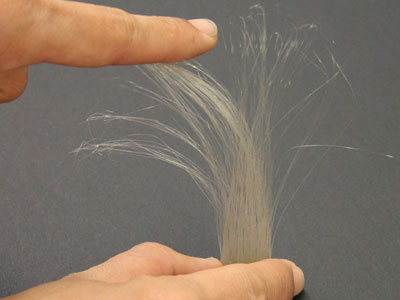9-Nov-2015 –
The beauty industry has only just started to explore the full potential 3D printing has to offer both manufacturers and consumers alike.
In the past few years, 3D printing has made steep progress in the cosmetics industry with regard to skin modelling and even 3D-printed make-up – but it is becoming clear that this represents just the tip of the iceberg.
In what could be one of the biggest breakthroughs for those in the hair care, brush and fibre industries, researchers from Carnegie Mellon University in the US, have successfully created a new technique to 3D print strands of hair including fibres and bristles. Their findings were presented in Proceedings of the 28th annual ACM Symposium on User Interfaces Software and Technology (UIST ’15).
‘Furbricating’ breakthrough
Gierad Laput, Xiang ‘Anthony’ Chen and Chris Harrison have released the findings of a new technique, which they say allows for ‘furbricating’ 3D printed hair. In the video above, the researchers explain that they used fused deposition 3D printing to print soft hair fibres. They said their work was inspired by the residual string that forms when operating a glue gun, an effect that they emulated using 3D printers.
The fibres created are claimed to be easily added to 3D printed models with the user being able to specify exactly where fibres should be positioned within a solid 3D printed object. The researchers explained that their technique is simple and easy to integrate with existing workflows. Fibres can be created in different colours, with varying density (coarse or fine) and length (long or short).
Recognising limits
However, the researchers did identify some limitations with regard to maximum length of hair (bound by the size of the ‘print bed’), hair structure and printing time. Time spent printing was reduced by using horizontal strand printing, however, the researchers noted “the overall speed is still fairly slow”. They added: “This is primarily due to the necessity of having to print one strand at a time, rather than many in parallel.”









 Follow us on Linkedin!
Follow us on Linkedin!